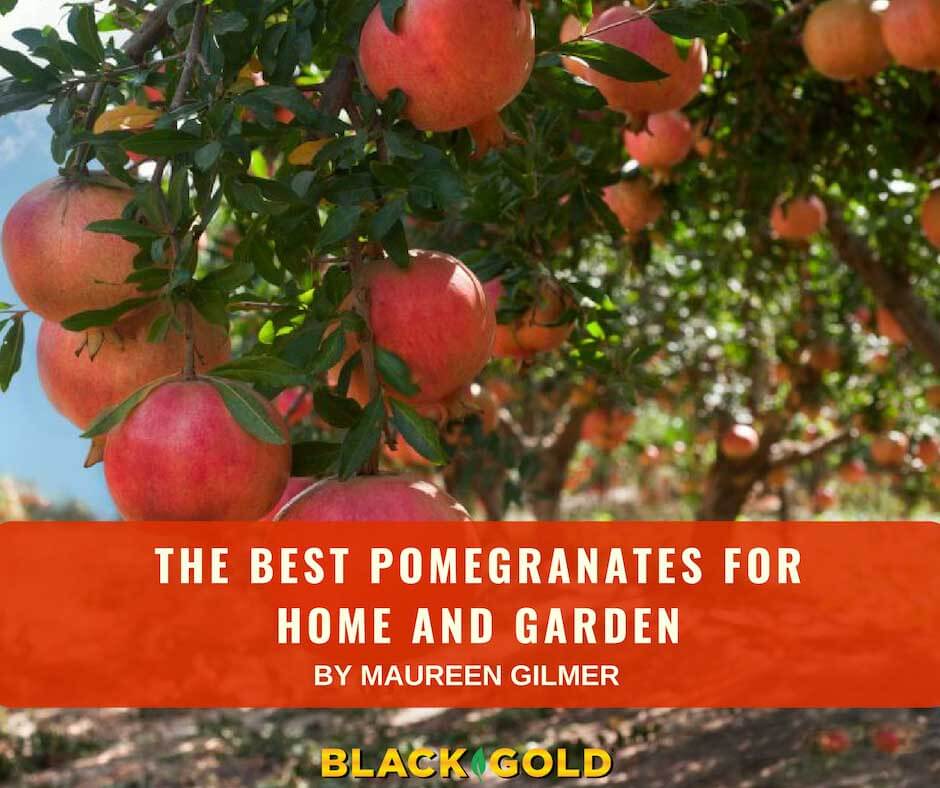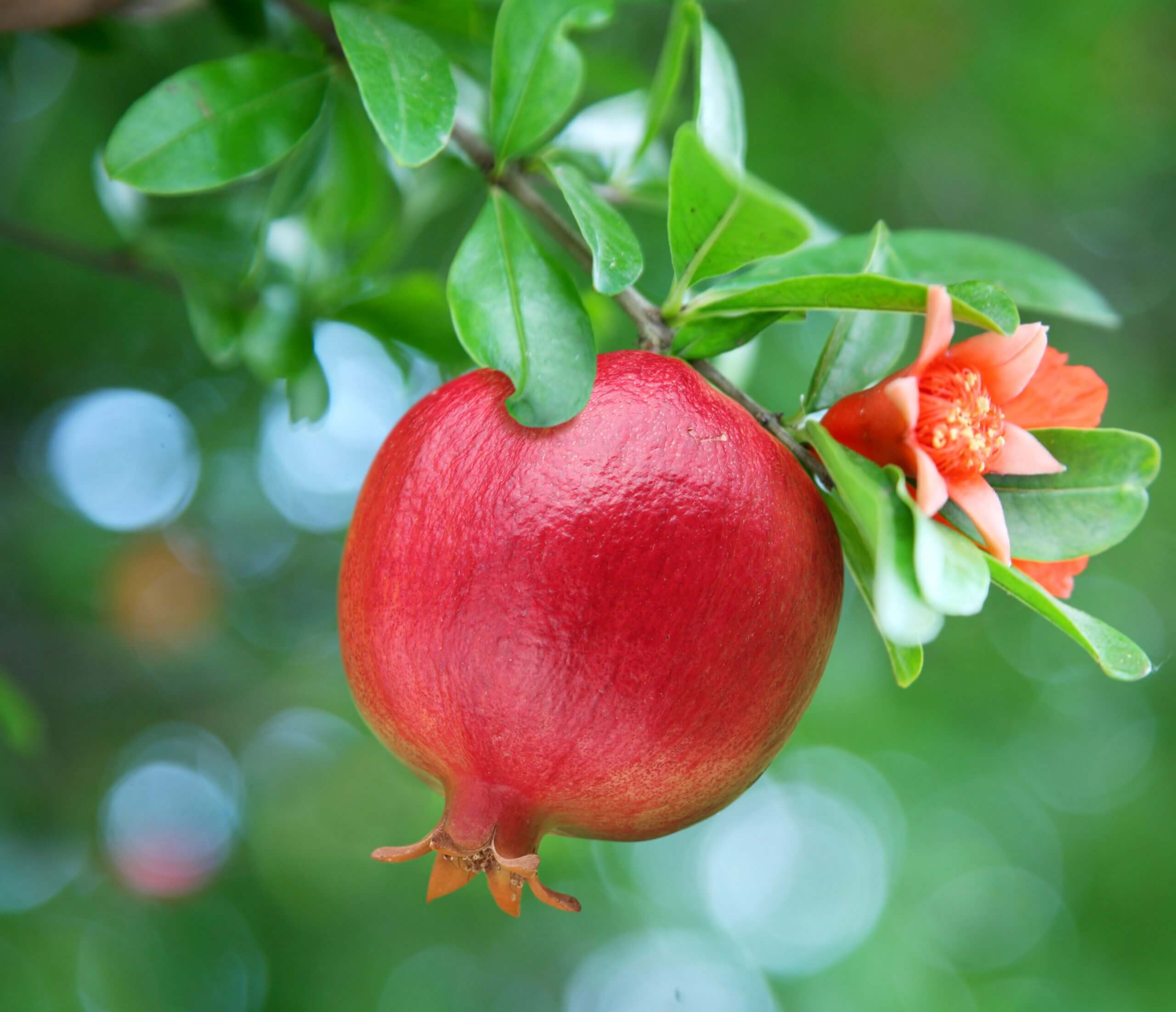
Since antiquity, the bright red seeds of the pomegranate (Punica granatum) have been likened to rubies. The fleshy seeds are a sign of the nutritional treasure hidden inside the fruit’s tough, leathery rind. The covering of these Middle Eastern fruits protects them from birds and dehydration, unlike fully exposed stone fruits and berries.
The pomegranate tree has changed little since the earliest biblical references, making it a paleo fruit. They provided vital nutrition for the Mediterranean, Middle Eastern, and North African people who traditionally grew them in wall gardens that protected the foliage from drying winds and cool weather. This is key to growing pomegranates because a lack of heat or too much wind will limit fruiting. Untimely rains in the fruit’s late-summer and fall ripening season can also cause rinds to crack open prematurely, spoiling the contents.
Growing Pomegranates

Pomegranates may be deciduous, semi-evergreen, or evergreen, depending on the climate and variety. In the American Southwest, they are deciduous. What makes them so great in gardens is that the small trees or large shrubs are both ornamental and edible. The flowers are vivid coral red, offering early visual interest. As fruits ripen later in the season, they offer more visual interest.
Today’s pomegranate trees come in a huge range of sizes, with smaller trees for city yards or larger trees with abnormally large fruits for orchards or spacious landscape plantings. So long as the local climate is within the cold tolerance range (USDA Hardiness Zones 8-11) and summers are not humid and rainy, pomegranates should thrive.
Just because pomegranates grow well in poor, dry, rocky soils doesn’t mean they don’t benefit from organically fortified soil. Commercial growers know that to achieve the largest juiciest fruits regular moisture and nutrition are needed. If the soil drains well, a pomegranate will appreciate added soil amendment. The best choice is to blend Black Gold Garden Compost into the soil at planting time. This helps young potted trees transition from potting soil to native soil.

The addition of a balanced NPK fertilizer has also been shown to increase fruit yields and decrease fruit cracking. As temperatures rise, mulch the young pomegranate with more compost to keep roots cool and moist as you deeply water them over the first summer.
Each “ruby” inside the fruit has a tart, sweet, juicy outer flesh that envelopes a BB-sized seed Seeds are typically hard, but breeding has reduced seed size. The seeds of some new varieties are nearly non-existent, so only the flesh develops. These types are preferred for eating out of hand, so be aware of fruit quality when choosing a variety.
Pomegranate Varieties
The very ancient pomegranates grown by the Spanish in the California missions did not have attractive fruit. New varieties are different. Twentieth-century breeding has yielded dozens of excellent improved selections with varying fruit and seed color, tree sizes, and tolerance to cool coastal growing conditions.
Choosing the right variety may be as simple as selecting the universally popular heirloom variety ‘Wonderful’ (1898), or picking the right-sized variety for your landscape or patio.
Top Varieties of Pomegranates for Western Gardens
‘Wonderful’: The most commonly grown commercial variety preferred by those who grow for juice.
‘Ambrosia’: Identical to ‘Wonderful’ except its fruit is three times larger.
‘Sweet’: Preferred for cooler summer climates and container culture.
‘Eversweet’: An early seedless variety ideal for short growing seasons further north or at higher elevations of foothills.
‘Pink Satin’: A super sweet, semi-seedless variety for eating out of hand.
‘Red Silk’: A dwarf selection (6′) perfect for small city gardens or for containers on the patio, conservatory, courtyard, or greenhouse.
‘Kashmir Blend’: Fruits have a complex flavor favored by connoisseurs and chefs.

With so many pomegranate varieties emerging from around the world, consider it a jumping-off point to find the optimal fit for your yard. Before you take the plunge, inquire at a local garden center or with a local extension agent for the varieties best suited to your climate to ensure plentiful fruiting.
The American Southwest is an optimal location to grow pomegranates as both decorative garden or productive home orchard plants. Reach back into the Old World to cultivate this ancient crop now updated to become the arid zone’s favorite edible tree, second only to the date palm.
